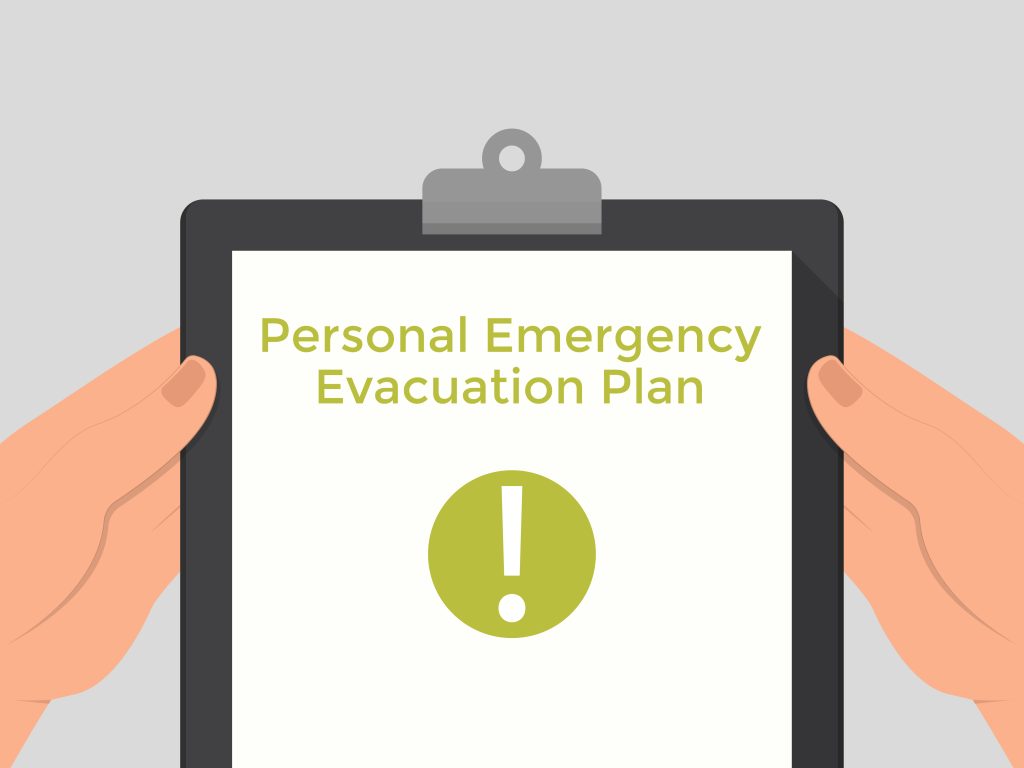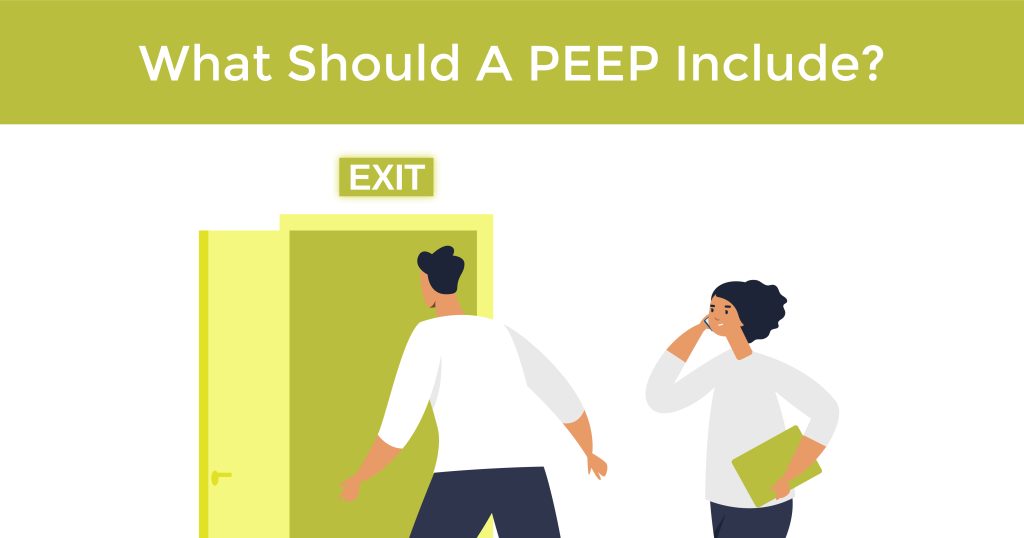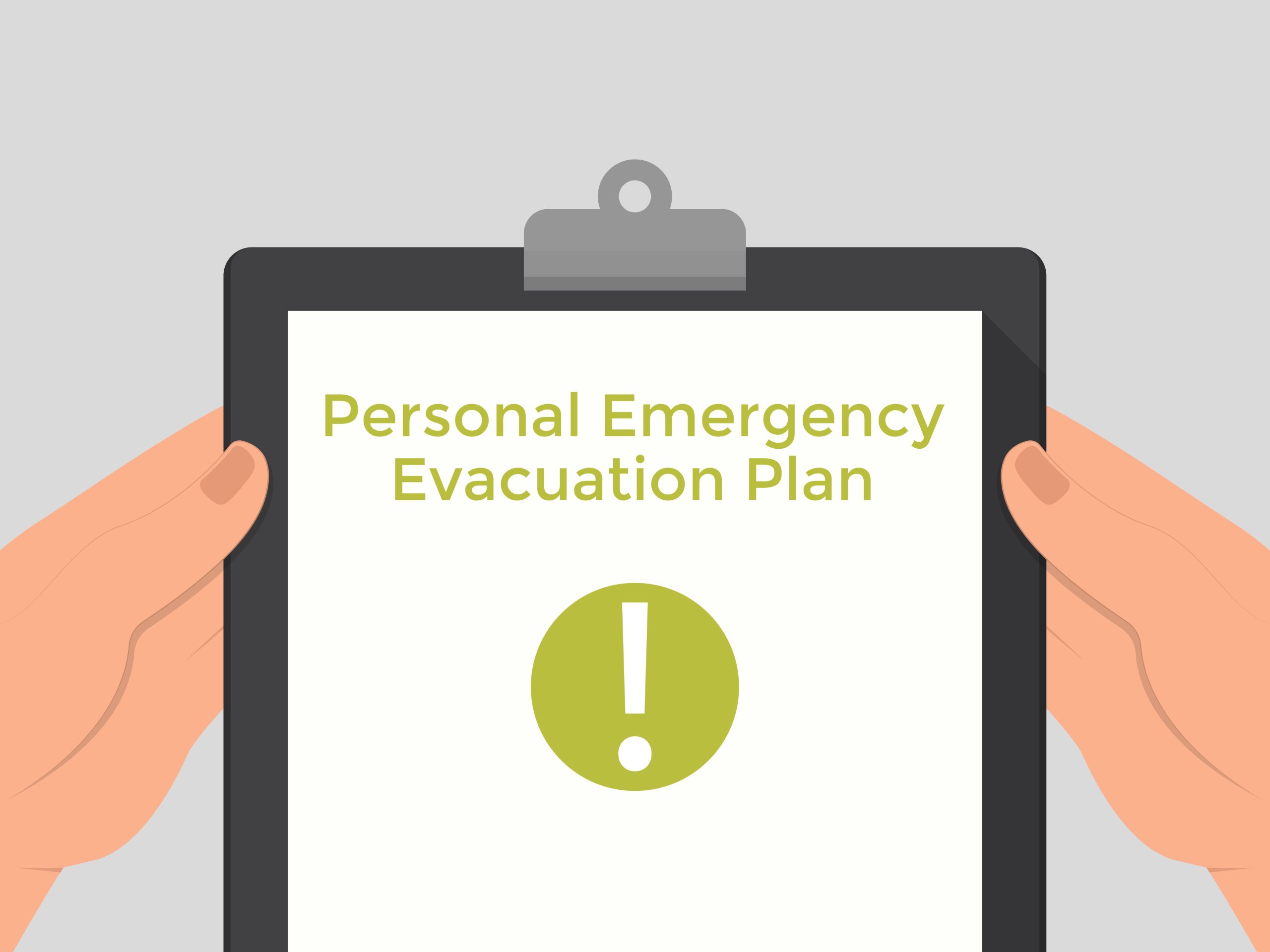What Is A PEEP?
Whenever there is an emergency in your building, the safety and well-being of everyone within is of paramount importance, including those with mobility issues or disabilities.
This is where Personal Emergency Evacuation Plans, better known as PEEPs, come into action. They outline the requirements that different people have in your building for additional assistance to ensure they can safely evacuate in an emergency, such as a fire.
Regardless of whether you’ve heard of PEEPs before and don’t know what they involve or if you have never heard of them — don’t worry, because we’ve got a quick guide to cover the topic. We’re going to explain what they are, how to determine whether you need one and what the core components are that you need to include.

What is a PEEP?
As we’ve already mentioned, PEEP stands for Personal Emergency Evacuation Plan. This is a document that is tailored to the needs of individuals in your building where disabilities or mobility issues could impact how easily people can evacuate in an emergency situation. The document will outline what the procedures are and any necessary arrangements that help address these unique needs to provide safe and efficient escape routes and strategies for all.
For example, within a care home setting, almost all residents will likely require a PEEP tailored to their individual needs to ensure they can be evacuated safely. While some PEEPs may be very similar, allowing for certain procedures to be applied across multiple individuals, it’s important that everyone has their own PEEP to factor in all unique requirements.
How do I know if I need a PEEP?

You can easily establish whether you need a PEEP for anyone in your building by asking yourself whether there is anyone who cannot exit the building swiftly and unaided in an emergency. There are several factors that could impact a person’s ability to evacuate, so it’s worth assessing individuals for a number of indicators.
Mobility impairments
Whether it’s a long-term impairment, a temporary physical injury or something such as pregnancy, if there are people in your building who need to use a wheelchair or assistive devices, need help using stairs or have any other issues that impact them moving swiftly in an emergency, they should have a PEEP.
Sight impairment
Where a person’s vision is impaired, they may need special assistance to guide them during an emergency evacuation. This support can ensure they can safely leave the building but also helps them to avoid further injury in the event of mass movement in the premises.
Hearing impairments
Anyone with a hearing impairment may not be aware that an alarm has sounded, resulting in a delayed reaction in the event of a fire. This, again, will require you to plan for additional assistance for anyone who is deaf or hard of hearing.
Cognitive impairments
Where cognitive impairments would slow down an individual’s evacuation or understanding of the imminent danger, PEEPs will be required. This will often be the case for hospitals, care facilities and educational facilities where more direction and guidance is required.
Medical conditions
Any medical conditions that impact how easily a person can evacuate need to be considered. This can include heart, respiratory and chronic issues, meaning specific care and attention need to be given to facilitate safe evacuation.
What should a PEEP include?

PEEPs are specific to individuals and can therefore contain varying information to help ensure the right procedures are put in place to meet a person’s needs. However, there are some key things that a PEEP should include, so here are a few typical aspects you can expect it to include:
- The person’s name and an emergency contact
- The location of where the person commonly works or lives in the building
- The evacuation route the person will use
- The names of anyone assigned to assist the individual
- Any special equipment needed to aid safe evacuation
For some, a PEEP will only be needed temporarily if they’re recovering from an injury, while some PEEPs will need to remain in place as long as that person lives or works in the building. You should look to review any long-standing PEEPs periodically to ensure the best measures are in place for the individual concerned.
Here at Surrey Tech Services Ltd, we can help you to ensure your premises are set up to safeguard lives no matter what sector you operate in. From fire alarm systems and fire doors to fire risk assessments which ensure you have all the appropriate measures in place, we help you to uphold your legal obligations when it comes to fire safety.
Covering London and the Home Counties, call us today for a free site visit or for more information on any of our services for your building.
